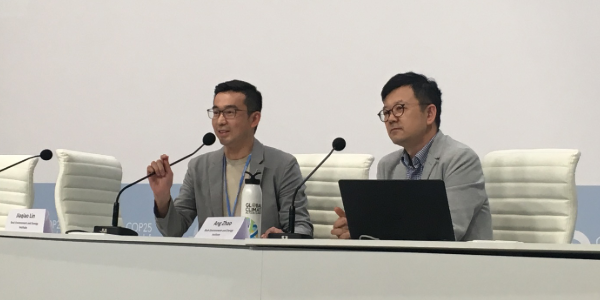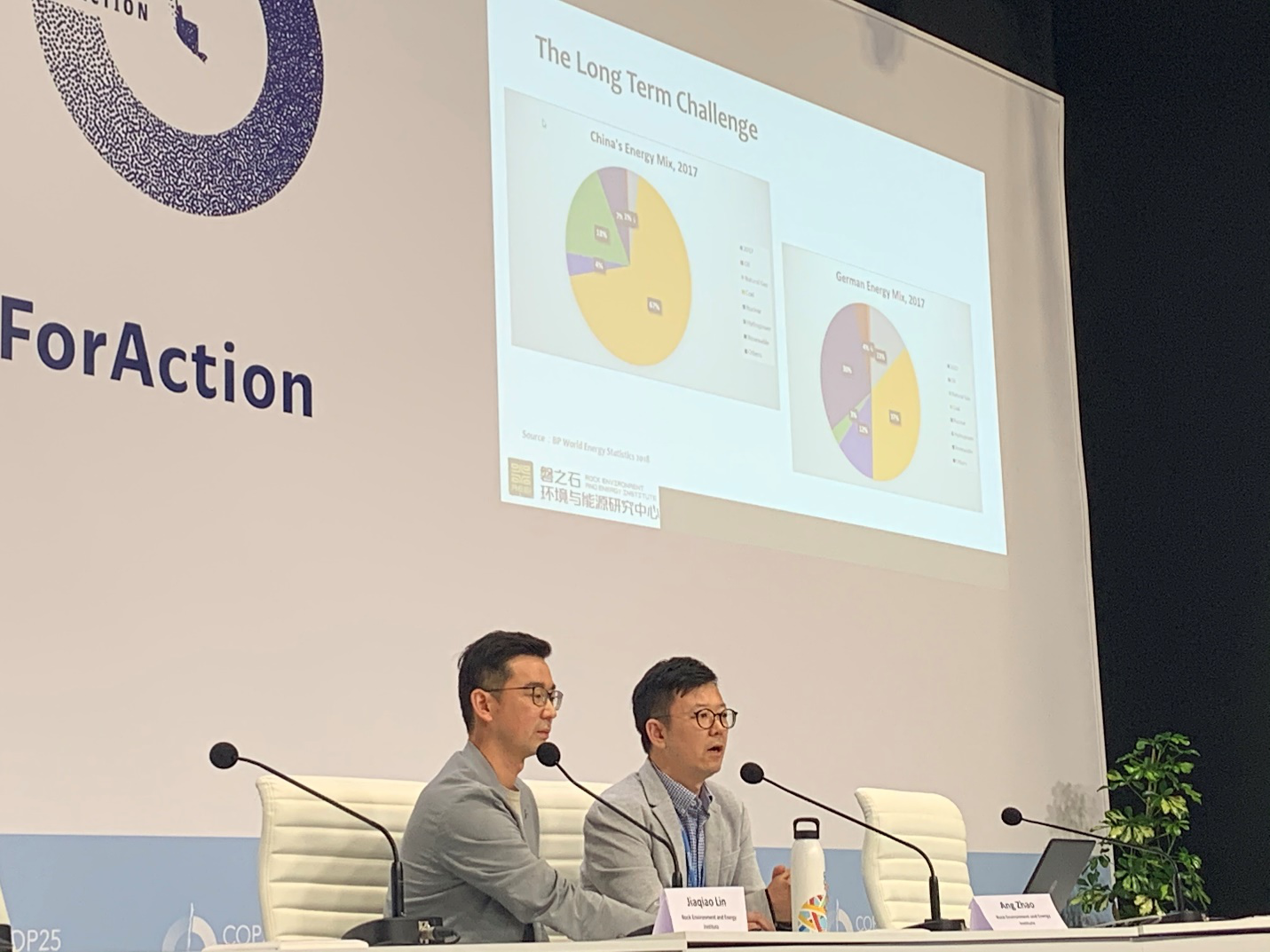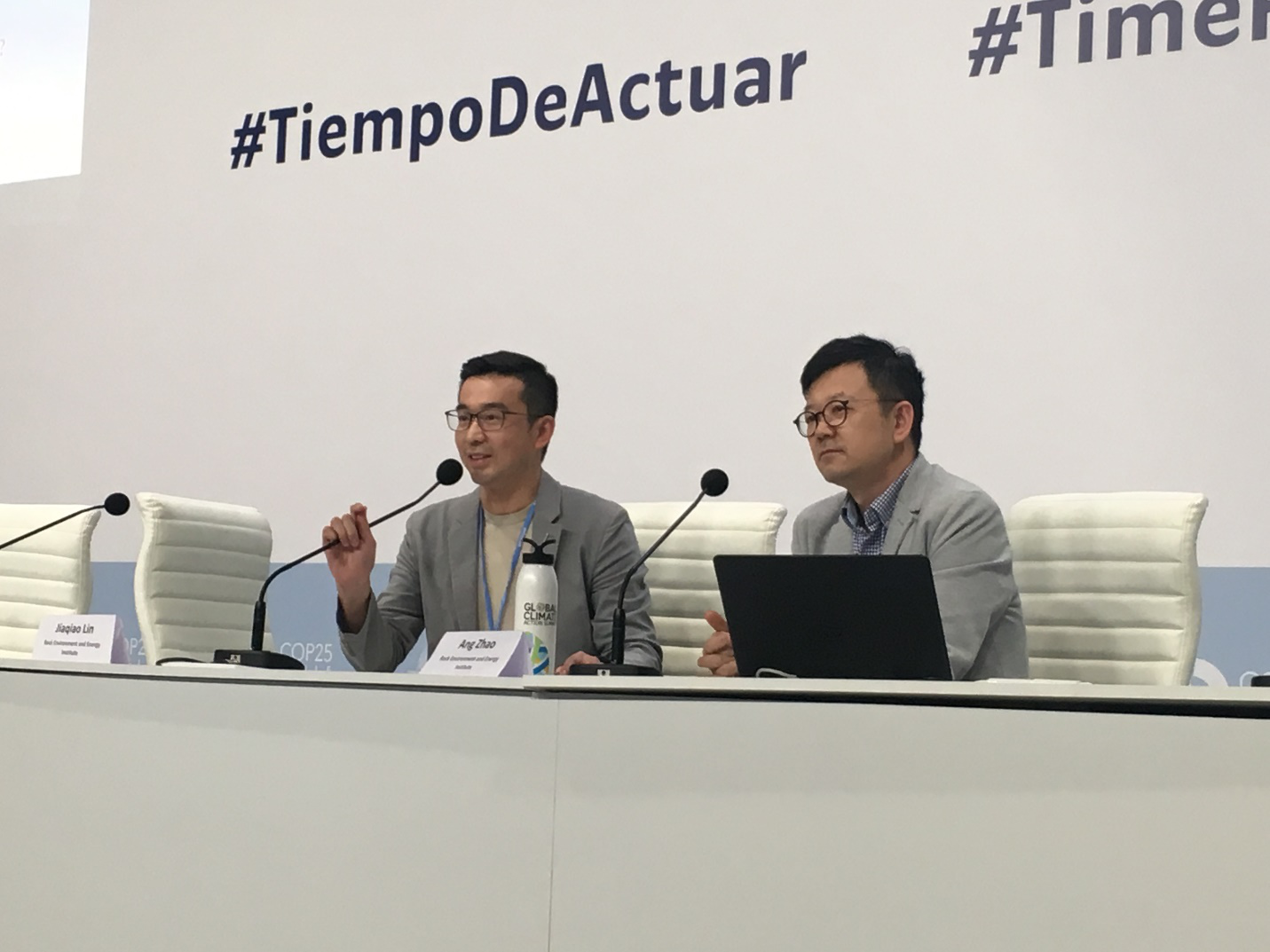

On December 5th, 2019, Rock Environment and Energy Institute (REEI) organized a press conference at COP25 to release the report Energy Transition in China: The Way Toward a Low-emission Transport. While diplomats wrangle over the final rules of the Paris Agreement, the arguably one of most important questions is what China will do in 2020. Ang Zhao and Jiaqiao Lin, Co-Directors and Co-Founders of REEI, led a thorough investigation of the current pathways of energy transition in China’s transport sector and comparative best practices in sustainable transport development strategies among a few key countries and regions. The report suggests a sustainable transport policy making framework by integrating social justice, public health and climate change. Putting China’s transport development into the context of global climate policy, particularly, Nationally Determined Contributions(NDCs) under the Paris Agreement, the report provides a series of policy recommendations for China increasing its climate commitment in transport sector and formulating sustainable transport strategies.

Figure 1: Zhao is speaking
Mr. Zhao first explained the policy frameworks of sustainable urban transport. By introducing the triple bottom lines of sustainable transport from the Transportation Research Board (TRB) of the United Stated, Mr. Zhao stresses the significance of systematicness, inclusiveness, and interactiveness in the sustainable transport policy making process. An effective policy instrument, Zhao argued, has to hit a nerve and set up a panoramic perspective. Every country has its strengths and challenges. For example, that Japan has a great industry competition policy in transport sector and hosts a high cultural homogeneity can give the country the advantages to enhance the efficiency potential and harness the fruits from massive behavioral interventions. However, Japan’s aging population and extreme low birth rate may bring a unique factor for its sustainable transport strategies. How to utilize the local strengths and challenges to develop suitable climate policies are of key concern to policymakers. On the other hand, Los Angeles’ clean vehicle policies and related urban planning and development policies are potentially a great demonstration of the strong political willingness to strike out a Green New Deal and mobilizing a transformative policy changes resulted from public consensus on sustainability.
China, in light of climate change and energy transition, pushed forward electric vehicle technology development. However, Zhao stated that we cannot achieve carbon reduction goals solely based on switching to clean energy vehicles. If the whole power generation system is reliant on coal, which remains for decades, we can’t mitigate transport carbon emissions by pumping electric vehicles powered by coal combustion. . Nevertheless, there are still positive gains from China’s boosting growth of electric vehicles. Improved urban air quality and related public health are certainly drivers for China’s clear air policy in the past seven years. On the other hand, Jiaqiao Lin indicated that more than 80 cities have initiated emission peaking plans and air pollution regulation plans, especially those in the coastal regions with a robust economy and political centers, but none has mentioned transport sector emission peaking targets.

Figure 2: Lin is speaking
Mr. Lin noted that China’s central guiding policy for GHGs emissions reduction is supported by developing low carbon city programs, which can be seen as the key policy concerning transport sector indirectly, while still there is a policy gap at lower administrative levels to implement low-carbon policies in the transport sector. He finally gave policy recommendationsto increase climate commitments in transport sector by defining the peaking year for transport sector, integrating the new fuel efficiency standards into NDCs, increasing the development goals of EV development, considering the mitigation target of civil aviation sector, strengthening the policy exchange and supporting relationship between transport and health ministries, , and improving the research on synergy of carbon pricing and other mitigation policies.
At the Q&A section, an interesting question was raised by Albert Baits form Global Ecosystem Network that how China’s Eco-civilization pilot program has been in line with Chinese NDC. Mr. Lin answered that the Eco-civilization pilot focuses more on the horticultural development, low carbon and eco-communities; he noted that the main program concerning the NDC should be the Low carbon Pilot Provinces and Cities program lead by NDRC. It is very important for horticulture, low carbon, and ecological communities.
The report touches a very important sector which has not been discussed in China’s climate policy. While the climate negotiations are getting more attention from all over the world in these two weeks, REEI’s effort may bring more constructive thinking and suggestions in the policy discussion of sustainable transport development.




